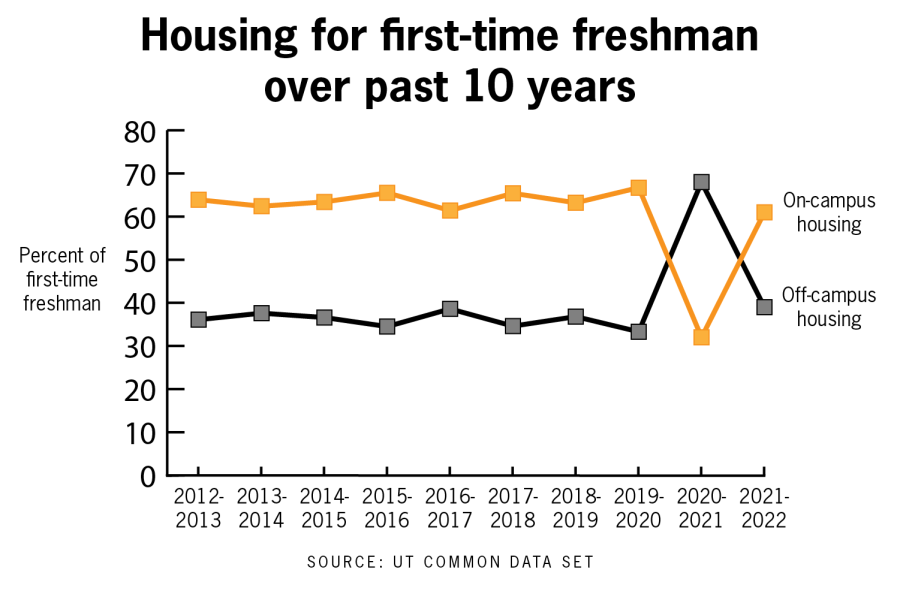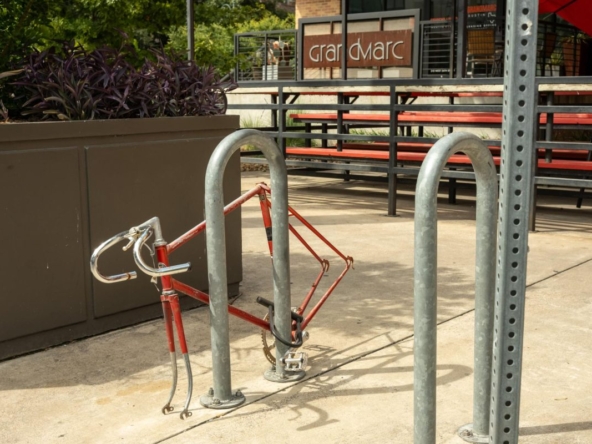A report from the University showed that almost 40% of first-time in college (FTIC) freshmen lived off campus in Fall 2021. The report did not list the specific reasons why students chose to live off campus.
According to the University’s 2021-22 Common Data Set, 61% of FTIC freshmen — which does not include first-year transfer students — lived in “college-owned, operated, or affiliated housing,” while the rest of FTIC freshmen lived off campus or commuted. Some students worry these statistics are a sign that UT housing isn’t as accessible as it should be.
Ximena Sifuentes Chavez, a radio-television-film junior who shared an apartment with her family in East Austin until the spring of her sophomore year, said many students have no choice but to look elsewhere for housing because of the high cost of living on campus.
“(The University) helped me with tuition, and I’m so grateful for that, but going to school means so much more than just having to pay (tuition) … they don’t help me with housing,” Sifuentes Chavez said.
University spokesperson Mike Rosen said the percentage of FTIC freshmen who request housing is “pretty consistent” over time because UT doesn’t require freshmen to live on campus. About a third or more of FTIC freshmen chose to live off campus each year for the past 10 years with an exception in Fall 2020 due to COVID-19, according to the report.
Additionally, Rosen said the University is exploring ways to acquire more housing for students near campus to accommodate for increases in UT enrollment and rising housing costs in the city.
“We’re continuing to find ways to increase the supply of housing options that are in proximity to campus, and (that) are accessible and affordable because we want to diminish the cost of living as a barrier to recruiting talent,” Rosen said. “We acquired Dobie in the fall of 2021 and (began) operating it last spring, and that is an example of our efforts to expand the availability of housing.”
Because the bus commute could take up to an hour, Sifuentes Chavez said she only came to campus for classes and struggled to make time for extracurriculars and organizations. Additionally, she said she wished UT had an office specifically for commuter students to learn about programs and build community because she felt so disconnected from campus.
“I was able to work as well as go to school and start my own savings account because I knew I didn’t want to continue living (in East Austin) for the entirety of my college career,” Sifuentes Chavez said. “I saw how bad it was for my mental health that first year … I was missing out on community … (making) those firsthand connections that first year.”
UT Housing Transparency, a student-run resource page on Instagram, assists students with obtaining housing in West Campus. Plan II junior Isabel Webb Carey, one of the students who manages the account, said she’d like the University to offer more guidance in the search for off-campus housing if they expect so many students to take that path each year.
“I wish (UT) knew how much time, emotional and financial labor it takes to secure housing … it’s just kind of a learn-by-doing process,” Webb Carey said. “Housing insecurity was such a major part of my 2022 experience that fundamentally detracted from my experience of being a student.”
Originally published Jan. 31, 2023, in The Daily Texan
By Sarah Brager
Graphic by Sara Kinney




